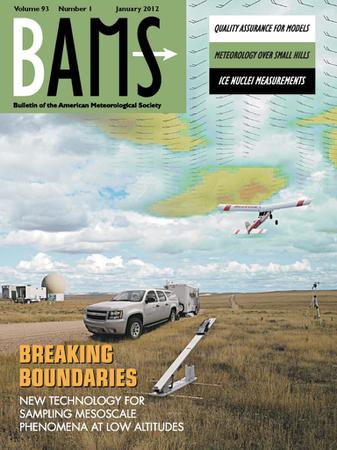Bridging new observational capabilities and process-level simulation: Insights into aerosol roles in the Earth system
IF 5.9
1区 地球科学
Q1 METEOROLOGY & ATMOSPHERIC SCIENCES
引用次数: 0
Abstract
Abstract The spatial distribution of ambient aerosol particles significantly impacts aerosol- radiation-cloud interactions, which contribute to the largest uncertainty in global anthropogenic radiative forcing estimations. However, the atmospheric boundary layer and lower free troposphere have not been adequately sampled in terms of spatiotemporal resolution, hindering a comprehensive characterization of various atmospheric processes and impeding our understanding of the Earth system. To address this research data gap, we have leveraged the development of uncrewed aerial systems (UAS) and advanced measurement techniques to obtain mesoscale spatial data on aerosol microphysical and optical properties around the U.S. Southern Great Plains (SGP) atmospheric observatory. Our study also benefits from state-of-the-art laboratory facilities that include 3-dimensional molecular imaging techniques enabled by secondary ion mass spectrometry and nanogram-level chemical composition analysis via micronebulization aerosol mass spectrometry. Through our study, we have developed a framework for observation-modeling integration, enabling an examination of how various assumptions about the organic-inorganic components mixing state, inferred from chemical analysis, affect clouds and radiation in observation-constrained model simulations. By integrating observational constraints (derived from offline chemical analysis of the aerosol surface using collected samples) with in-situ UAS observations, we have identified a prominent role of organic-enriched nanometer layers located at the surface of aerosol particles in determining profiles of aerosol optical and hygroscopic properties over the SGP observatory. Furthermore, we have improved the agreement between predicted clouds and ground-based cloud lidar measurements. This UAS-model-laboratory integration exemplifies how these new advanced capabilities can significantly enhance our understanding of aerosol-radiation-cloud interactions.连接新的观测能力和过程级模拟:洞察气溶胶在地球系统中的作用
摘要 环境气溶胶粒子的空间分布对气溶胶-辐射-云的相互作用有重大影响,而这种相互作用是全球人为辐射强迫估算中最大的不确定性因素。然而,大气边界层和自由对流层下部的时空分辨率采样不足,阻碍了对各种大气过程的全面描述,也妨碍了我们对地球系统的了解。为了解决这一研究数据缺口,我们利用无人机系统(UAS)和先进测量技术的发展,获取了美国南部大平原(SGP)大气观测站周围气溶胶微物理和光学特性的中尺度空间数据。我们的研究还得益于最先进的实验室设施,包括利用二次离子质谱法实现的三维分子成像技术和通过微雾化气溶胶质谱法进行的纳米级化学成分分析。通过研究,我们建立了一个观测-建模整合框架,从而能够研究通过化学分析推断出的有机-无机成分混合状态的各种假设如何影响观测约束模型模拟中的云层和辐射。通过将观测约束条件(利用采集的样本对气溶胶表面进行离线化学分析得出)与现场无人机系统观测相结合,我们确定了位于气溶胶颗粒表面的有机富集纳米层在决定 SGP 观测站上空气溶胶光学和吸湿特性剖面中的突出作用。此外,我们还提高了预测云层与地面云层激光雷达测量值之间的一致性。这种无人机系统-模型-实验室的整合体现了这些新的先进能力如何能够显著提高我们对气溶胶-辐射-云相互作用的理解。
本文章由计算机程序翻译,如有差异,请以英文原文为准。
求助全文
约1分钟内获得全文
求助全文
来源期刊
CiteScore
9.80
自引率
6.20%
发文量
231
审稿时长
6-12 weeks
期刊介绍:
The Bulletin of the American Meteorological Society (BAMS) is the flagship magazine of AMS and publishes articles of interest and significance for the weather, water, and climate community as well as news, editorials, and reviews for AMS members.

 求助内容:
求助内容: 应助结果提醒方式:
应助结果提醒方式:


